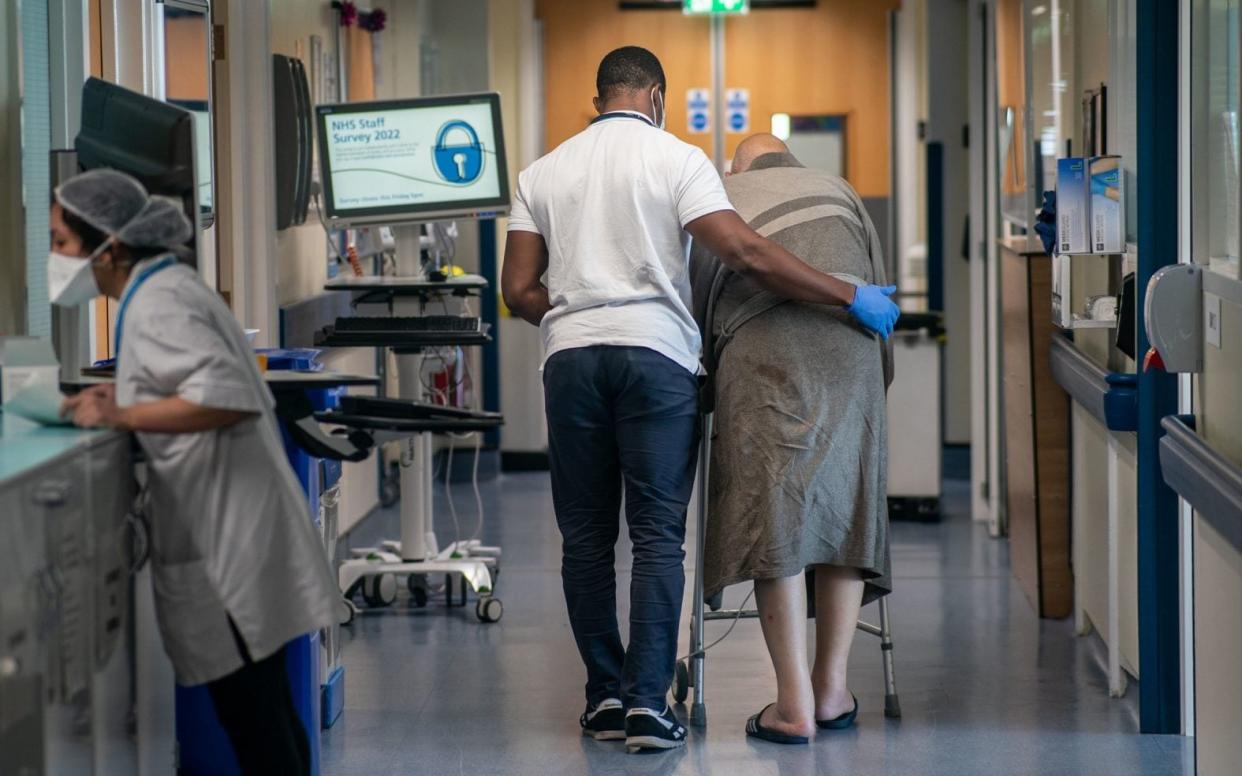NHS retirees with six-figure pensions double in a year

The number of retired NHS workers receiving pensions paying £100,000 has more than doubled in a year.
Nearly 2,000 former consultants and senior staff now have pensions paying six-figures – up from 890 last year and 698 in 2022.
Britain’s public sector pension debt has swollen to nearly £5 trillion, which is the equivalent of £173,000 per household.
The NHS retirement plan, which is the nation’s largest public sector pension scheme, paid £12bn to its retirees in the 2023-2024 tax year, official documents show. Most workers in the private sector have defined contribution pensions that do not guarantee a retirement income, while NHS pensions are gold-plated until death and increase every year in line with inflation.
Sir Keir Starmer has admitted that the NHS is “broken” and must “reform or die”, following a damning report by Lord Darzi.
The Government has also agreed an average pay rise for junior doctors, who are now referred to as resident doctors, of 22.3pc over 2023 to 2024 and 2024 to 2025. GPs voted in favour of collective action in August in an ongoing dispute about funding levels.

The number of retired NHS workers receiving more than £100,000 has increased by 116pc to 1,919 this year, according to figures from the NHS Business Services Authority, which runs the pension scheme. The figures revealed that 80 pensioners would receive payments of more than £150,000 this year. Nearly 40,000 former NHS workers will receive between £50,000 and £99,999, and another 34,374 will be paid between £33,000 and £49,999.
The average salary in the UK is £35,830, according to the latest government data. While the average worker contributes approximately 5pc of their salary to their pension and receives at least 3pc from their employer, the highest-paid NHS workers contribute 13.5pc of their salary to the scheme and the NHS adds 23.2pc.

Much of the increase in the number of pensioners receiving more than £100,000 a year can be attributed to high levels of inflation, experts said. Public sector pensions, unlike those commonly held by private-sector workers, protect retirees from rising inflation, with increases every April based on the inflation rate as it was in the September before.
This April, these rules meant that the NHS pension increased by 6.7pc. The year before, retirees received a boost of 10.1pc. In August, inflation stood at 2.2pc, according to the Office for National Statistics (ONS).
John Ralfe, a pensions consultant, said: “It’s just absolutely extraordinary”. He said that those receiving £100,000 would be benefiting from Jeremy Hunt scrapping the lifetime allowance (LTA), which the last Conservative government did after lobbying from medical unions.
He said: “They’ve immediately clocked up a £2m pension for LTA purposes.” He said that the removal of the LTA will have increased the after-tax amount that NHS retirees would be receiving.
Tom Selby, of AJ Bell, said: “My best guess is that this will have been as a result of the decision to scrap the LTA. You’d naturally expect a few with really big pension entitlements to perhaps access their pension at that point to ensure they escape any reinstatement of that LTA that might happen in the future.”
Tony Goldstone, pensions committee deputy chairman at the British Medical Association, said that the increased numbers were the result of inflation.
He said: “It has nothing to do with any of this year’s pay deals for doctors; this would be impossible as doctors benefiting from these pay awards will see no changes to their pension for another full year.”
The union boss said that the number of doctors claiming for the first time this year who would receive more than £100,000 would be less than 10.
He added: “More broadly, with 1.1 million people claiming an NHS pension, those receiving more than £100,000 represent less than 0.2pc of NHS pensioners.”
A Department of Health and Social Care spokesman said: “The NHS pension scheme provides generous retirement benefits for hardworking staff after a lifetime of service. The final salary method was replaced in 2015 to ensure the costs of the scheme are sustainable.
“Staff and employers are required to pay contributions that meet the full cost of the benefits being built up, with higher earners paying proportionately more than other members.”


